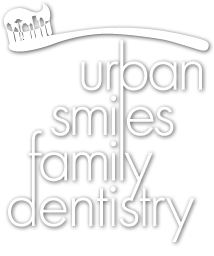Wisdom Teeth
Wisdom teeth, also called third molars, are the last permanent teeth to develop. They most often erupt during a person’s late teens or twenties. Wisdom teeth are known for the dental problems they can cause. Removing the wisdom teeth can help take care of symptoms you’re experiencing now. It may also prevent future problems.
HOW WISDOM TEETH DEVELOP
- At around age 9, wisdom teeth start to form inside the jawbones. The jawbones have a lot more growing to do, so they are not yet at their full density.
- By late teens, wisdom teeth roots have developed and are lengthening. The crown of each wisdom tooth may begin to erupt.
- By the early 20s, each wisdom tooth has erupted or is impacted. The roots may still be forming. The jawbones have finished growing.
- By about age 40, the roots of the wisdom teeth are solidly anchored in the bone. The jawbones have reached their adult density.
PROBLEMS ASSOCIATED WITH WISDOM TEETH
Many people’s jaws are too small for wisdom teeth to grow in properly. They often become impacted. Another common problem is that wisdom teeth are hard to reach and clean. Complications may not develop until years after the teeth first erupt or become impacted. Problems that may occur now or in the future include:
- Acute Poricoronitis – As the tooth breaks through the gum, the gum can become infected, causing pain, swelling, and sometimes bleeding.
- Chronic Periodontitis (gum disease) – Infection of the gum tissue around the wisdom tooth or the teeth next to it.
- Tooth Caries (Decay) – of the wisdom teeth or the adjacent teeth.
- Crowding – An impacted tooth can push on nearby teeth, forcing them out of alignment. This can interfere with your bite. Crowding can also damage individual teeth.
- Poor positioning – A tooth that grows pointing in toward the tongue or out toward the cheek can irritate nearby tissue. It may also interfere with your bite. Problems can also occur if there is no corresponding tooth in the opposite jaw for the tooth to bite on.
- Cysts and Tumors – A tooth that’s embedded in the bone is encased in a sac. This sac can fill with fluid, forming a cyst. A cyst can expand and destroy surrounding bone. In rare causes, a tumor forms in this area.
- Interference with certain kinds of dental or orthodontic work

IMPACTED WISDOM TEETH
Impacted wisdom teeth can grow in almost any direction. They may grow in straight or at an angle. Even if they grow in straight, there may not be enough room in the jaw to allow them to fully erupt.
- Straight upward, but without room to erupt into healthy position.
- Angled away from the other teeth.
- Parallel to the gum line.
- Angled in toward the other teeth.
CHOSING REMOVAL
If your wisdom teeth are causing pain or infection, Dr. Mironov can advise removing them right away. But even if you don’t have the symptoms, Dr. Mironov may still recommend removal. Most widsom teeth can be removed here at our office.
list of related conditions
• dry sockets • impacted wisdom teeth • removal of wisdom tooth • extraction • oral surgery
